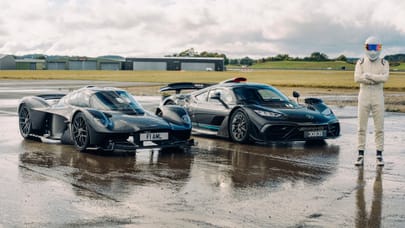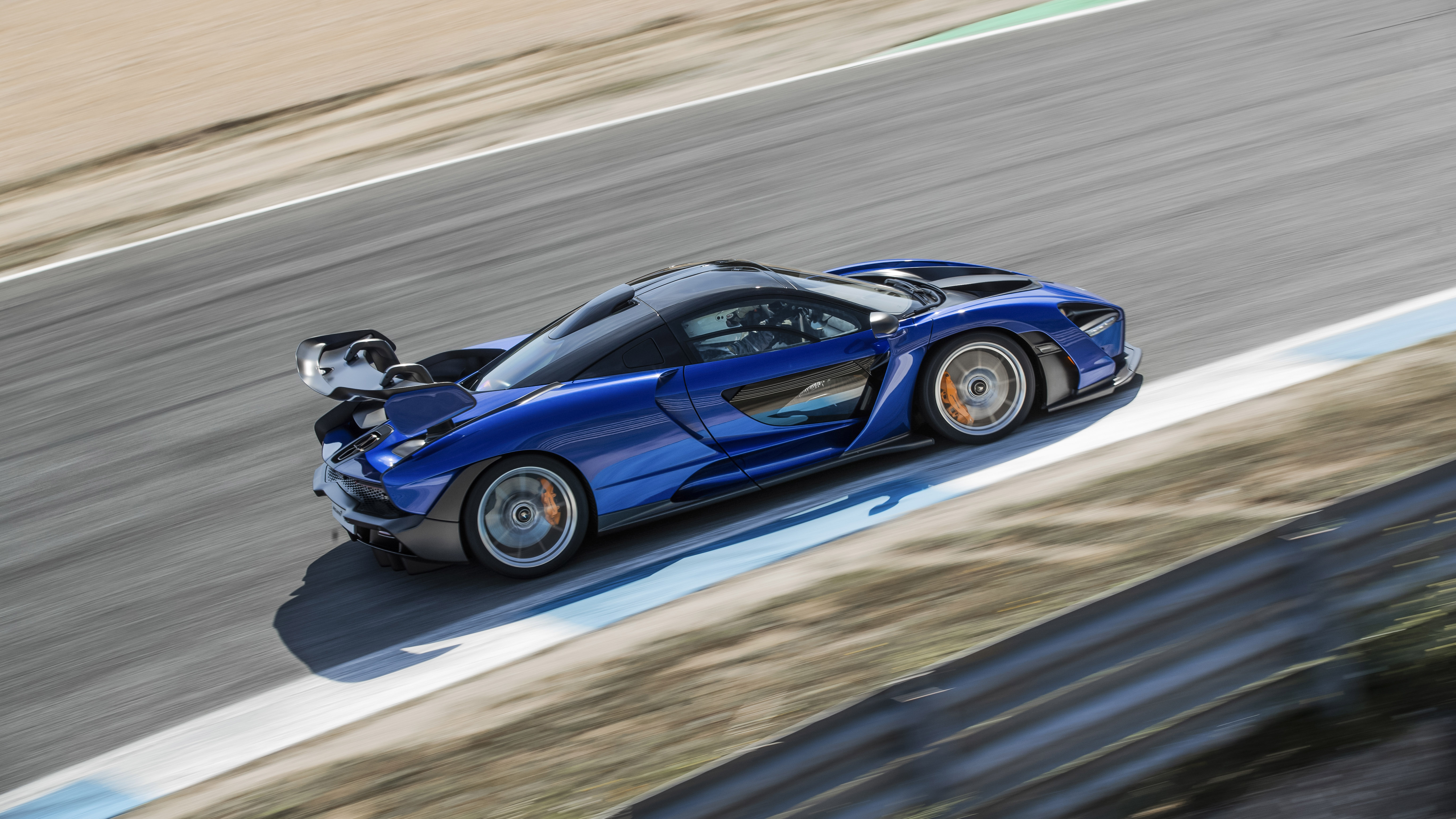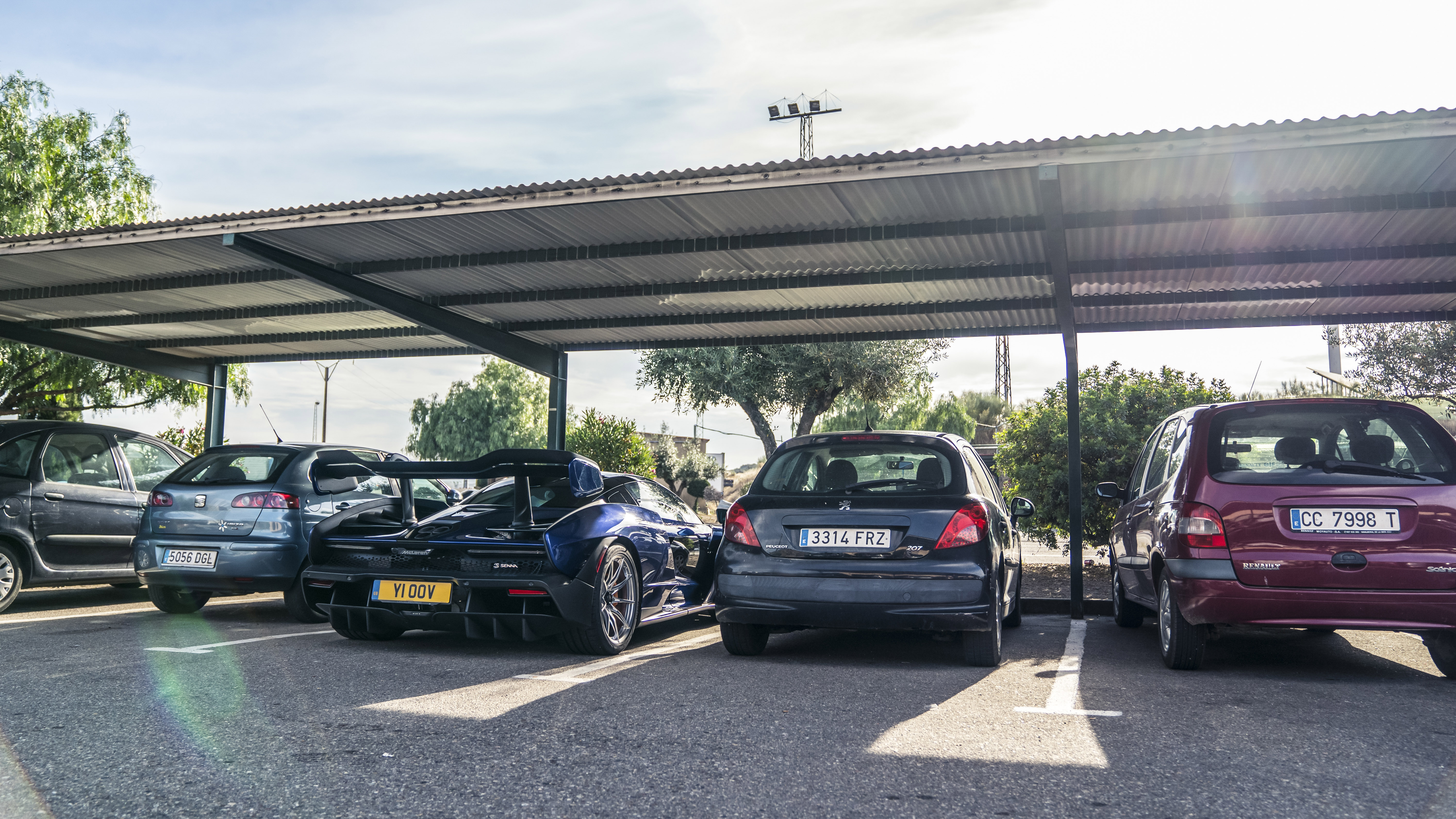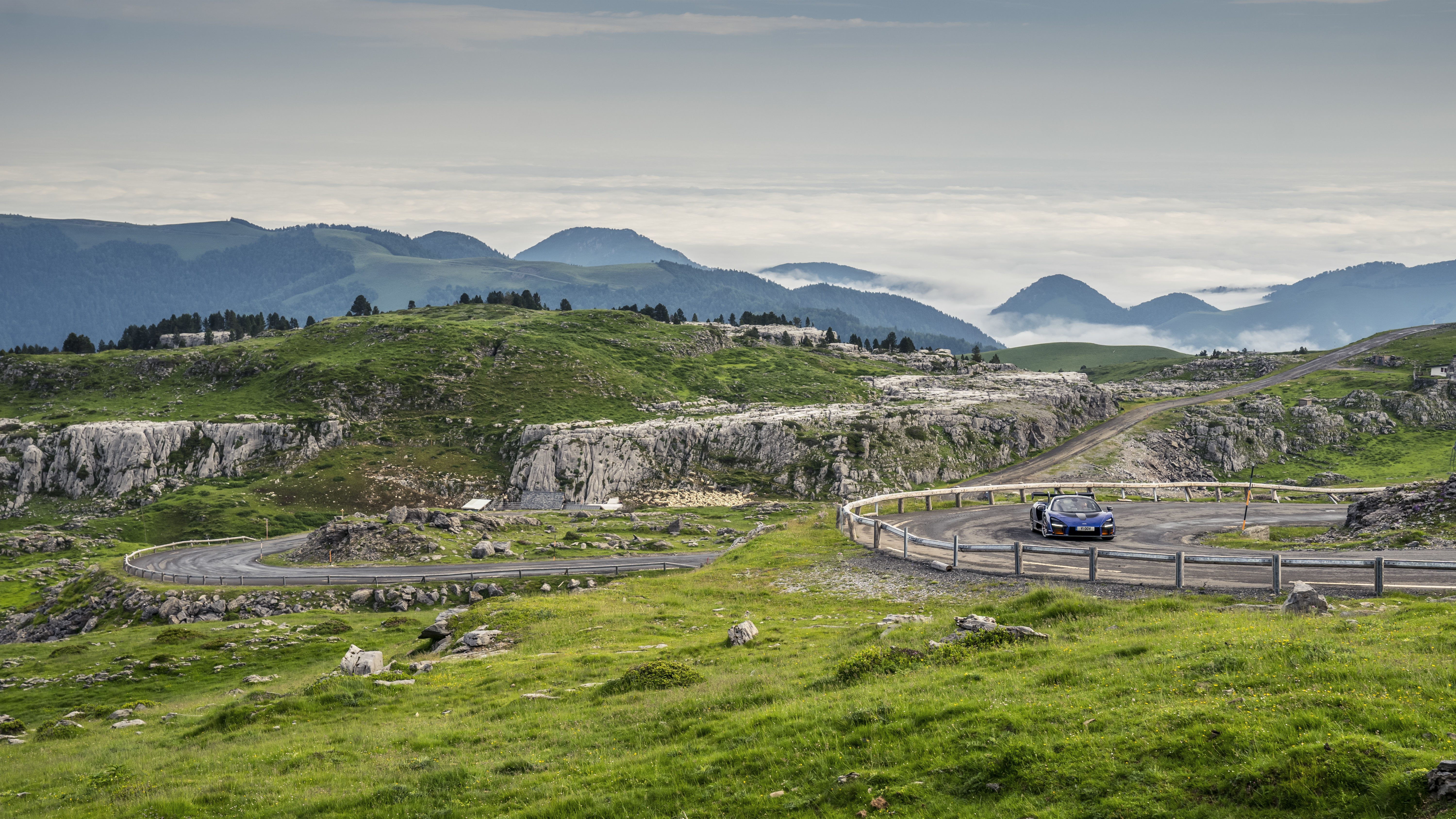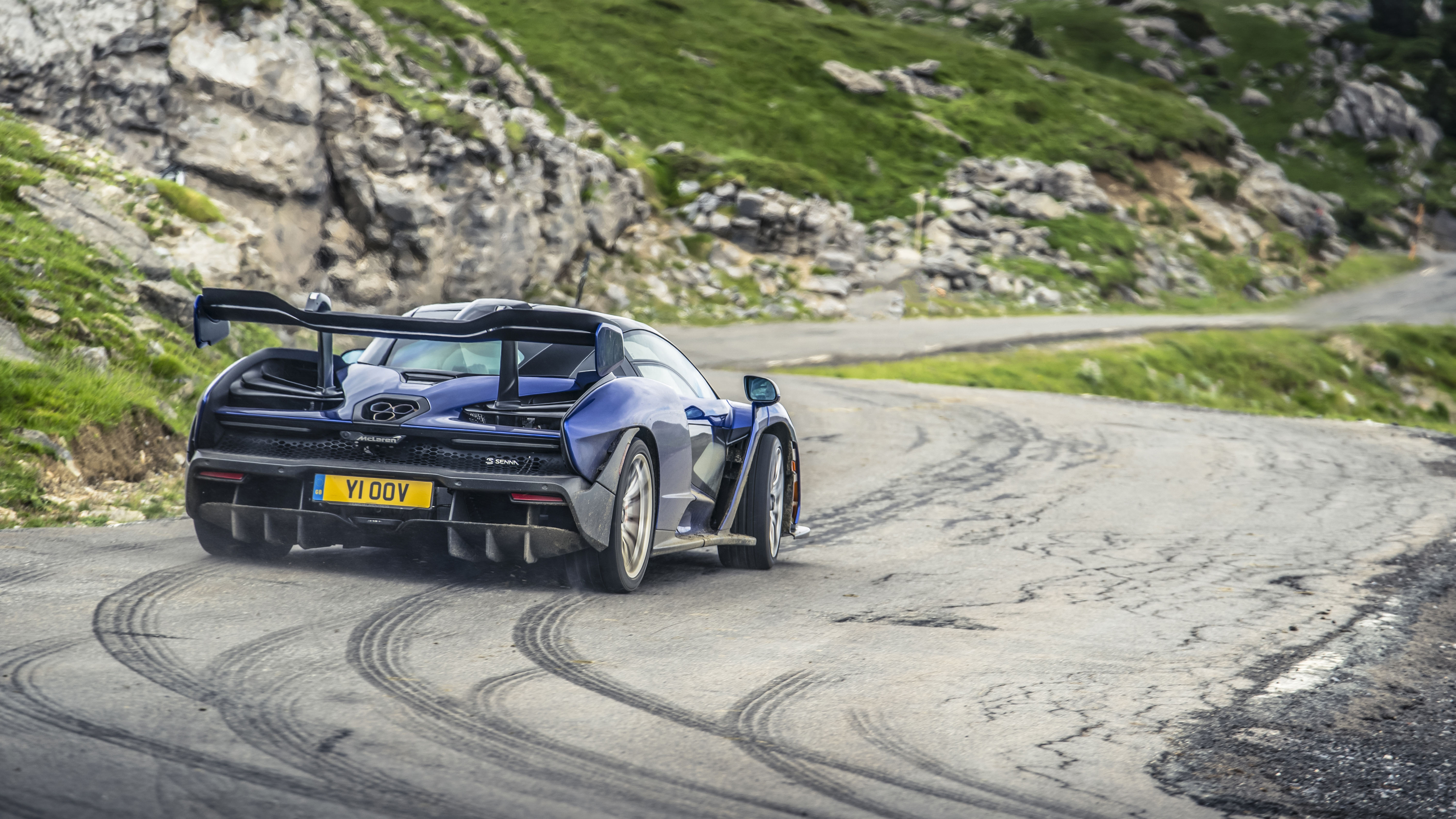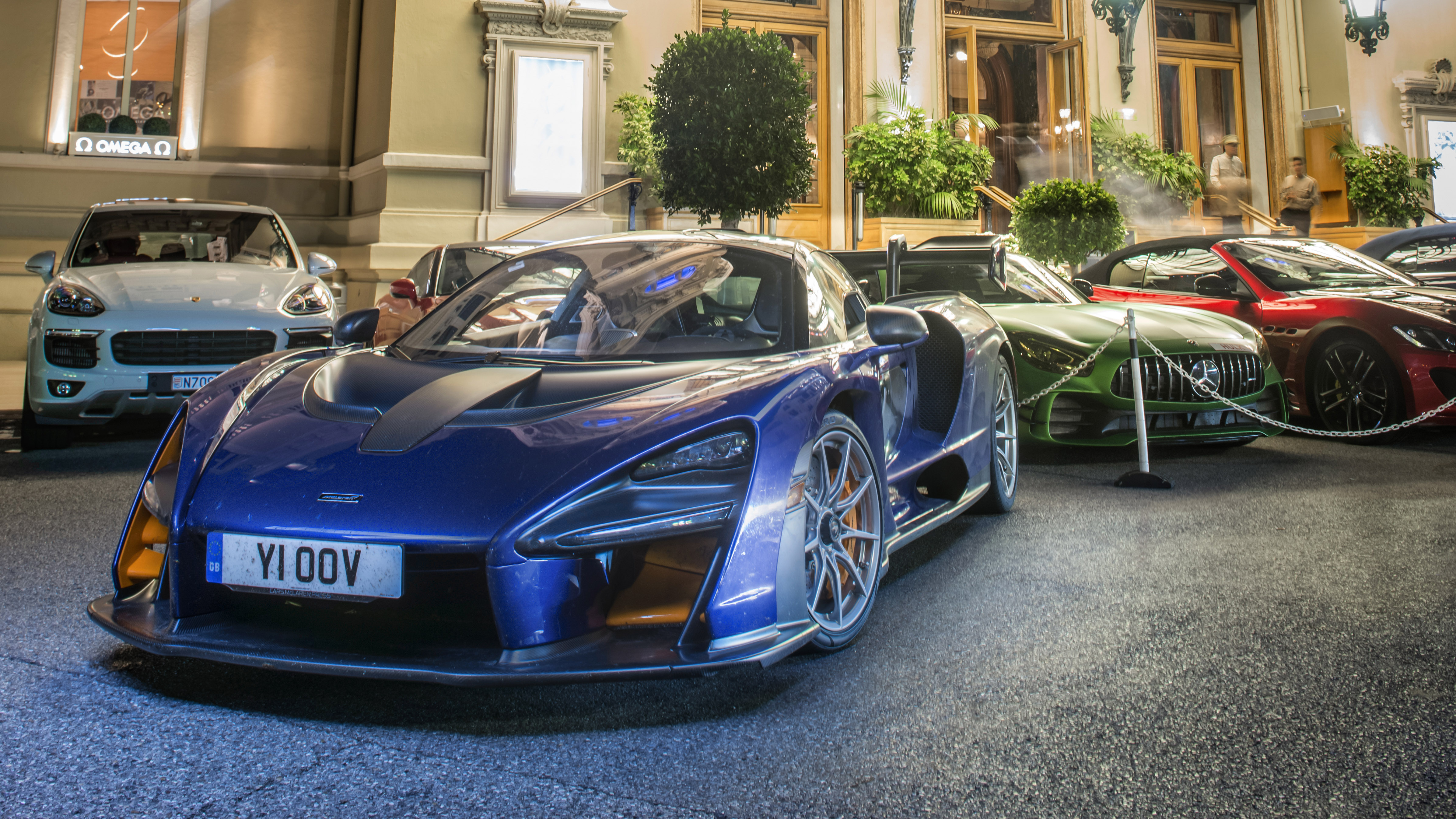
Chasing Senna: Estoril to Monaco in the McLaren Senna
We trace the legendary F1 driver's steps in the hypercar bearing his name
Estoril, 21 April 1985. It was wet. By lap 10 he was 13 seconds clear of the field. At the end, only one car was left unlapped. His victory was emphatic, dominant. It was his first.
Estoril, 27 June 2018. The rain has cleared away, but the place still looks a little forlorn. F1 doesn’t come here anymore, but the name has returned.
A car called Senna. The world’s fastest road-legal track car. That’s the billing. 800PS (789bhp), 800 kilos of downforce. It’s ready, dropped into Race mode, engine idling fretfully, pointed arrow-straight down the pitlane, sizing up the downhill approach into Turn 1, ready to head out and show what it’s capable of.
But this is a different story. One that ends not back in this pitlane after a handful of hot, furious laps, but some 1,500 miles away in another place that Ayrton Senna made his own. So, having clicked into first and crept away, I turn a sharp right through the rusting barriers and out through Estoril’s gates.
Words: Ollie Marriage / Photography: Rowan Horncastle
This feature was originally published in issue 311 of Top Gear magazine
You have to be very careful if you choose to name a car after the world’s most revered racing driver. That car had better live up to the man, respect his memory, reflect his glory, be a fitting legacy. Ayrton Senna da Silva. Think not only of what he achieved, the 41 Grand Prix victories and three world championships, but what he was: perhaps the purest, most focused racing driver there has ever been.
Uncompromising. There’s a word that fits both man and car. “You commit yourself to such a level where there is no compromise. You give everything you have, everything, absolutely everything,” Ayrton once said. McLaren’s compromise is more nuanced, couched in terms of regulation and legislation: “Legalised for road use, but not sanitised to suit it,” says the literature. Butt ugly, insists almost everyone that sees it.
The basics are familiar from the 720S: carbon chassis tub, 4.0-litre twin-turbo V8, 7spd twin-clutch gearbox, interconnected hydraulic dampers. But then the enhancements: the loss of weight, the addition of downforce, the rise in power, the change of focus. The biggest achievement of all is that it’s road-legal, meets all the requirements for pedestrian impact, for curve radius (sharp edges aren’t permitted), that a child’s head can’t fit between the slats on the rear deck. That’s an actual rule.
How it could get there in the first place isn’t mentioned. But then we stop for breakfast (bocadillo jamón ibérico would be a recurring theme across the Iberian Peninsular leg of our trip), and I see how people are drawn to it. And I find myself gesturing at the Inconel and titanium exhaust, not because of the exotic materials, or the fact it looks like a Star Wars character, but because it’s chuffing hot. I warn them about the protruding front splitter, the way the doors spring up and out, not to press too hard on the delicate carbon panels that deliberately deform in the airflow.
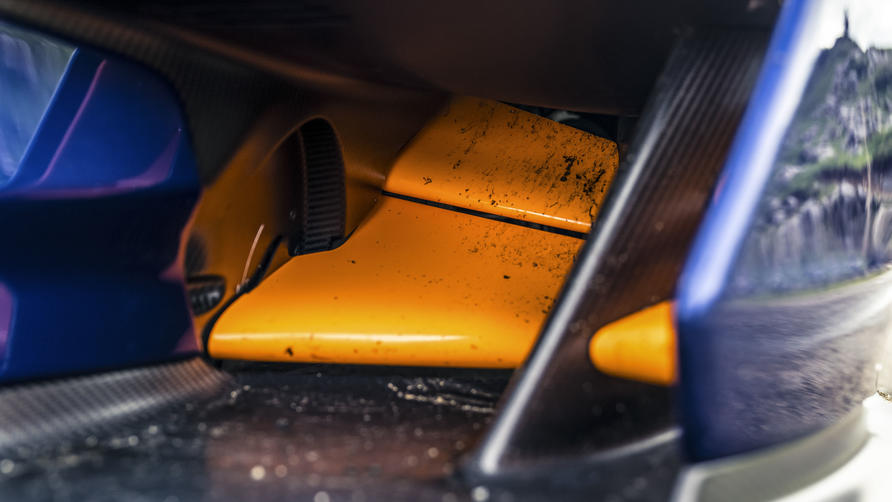
They treat it differently to other supercars because it plays with their heads. They have the same reaction I did – why does it look like it does? And when the only person who can answer their question is an Englishman who blows on his fingers and points at the tailpipes because he doesn’t know the Spanish for hot, their only recourse is to poke and prod it themselves.
We’d left Estoril way before dawn, wanting to get a few hours in the can before breakfast. It was worth it, not just to avoid the recklessness of rush-hour Lisbon or adapt to the car (the Senna surges against the clutch when manoeuvring and the brakes need a fair amount of pressure before they start working), but for the dawn sky, a hot pink ripple through the cloud base. And that was Portugal done: 150 miles knocked out before pink had morphed into orange. One country down, three to go. Well, assuming we count Monaco as a separate country. It has its own Grand Prix, which is reason enough for me.
Top Gear
Newsletter
Thank you for subscribing to our newsletter. Look out for your regular round-up of news, reviews and offers in your inbox.
Get all the latest news, reviews and exclusives, direct to your inbox.
Are the miles slipping by easily? No, not really. OK, you’re not out there battling the elements with your face, but there’s a wearing raucousness to the experience. The engine is ever-present and makes a decidedly un-pretty noise – a flat, rowdy blare that echoes around the bare, uninsulated cabin. Vibrations are transmitted through the seat, so that after an hour in the super-light carbon shell you find yourself needing a comfort break...
But that’s fine, because the car will need fuel about then, too. Downforce might work for you on circuit, but not on road. That rear wing, for all its wind-sculpting abilities, swan-neck links, near-90º tilting range, wing-profile stanchions and so on, is nothing but a barn door where drag is concerned. And drag is a concern when it means fuel-light chicken begins before 180 miles have passed (cruising economy will later work out at 20.6mpg when a 720S will happily do 27mpg).
This is total involvement: scenery, road, environment, traffic, never a moment you can switch off. Or want to
There’s also considerable road noise from the tyres, a smack of impact over each and every expansion joint, the hiss of angry air whipping over the bodywork, and in your peripheral vision white lines flash past the lower windows, the dots and dashes a Morse code message: t-a-k-e-m-e-t-o-a-t-r-a-c-k. And I know what you’re thinking – this is irrelevant, it’s a track car, so suck it up, buttercup.
But what will owners do with their cars? Because I could, I asked Bruno Senna. “The main objective was to do that [track work], but mine is the visual carbon-fibre one, so I might track it once, but then not so much because all it takes is someone going into the gravel trap and then you have chips everywhere.” So that’s Ayrton’s nephew, another born racer, saying he’s not doing too much track stuff because of the threat of cosmetic damage. But at least he’ll drive his. Many, I suspect, won’t.
And that’s a colossal shame. Because what’s becoming rapidly apparent is that, if you man up, this is an awesome roadtrip car.
The greater the challenge, the richer the experience – that’s my philosophy (although it can also be contained in a single word: masochist). Driving from Estoril to Monaco in a GT would be no adventure, but in the Senna, you earn the miles. Dots have been joined between Cáceres, Salamanca, Valladolid, Burgos and Pamplona, and things have happened, mostly notably a wallet-lightening, hour-long Guardia Civil delay, backache and the discovery that western Spain has not only ski resorts but grassy plains that could double for the Serengeti. I try to find Toto on Spotify.
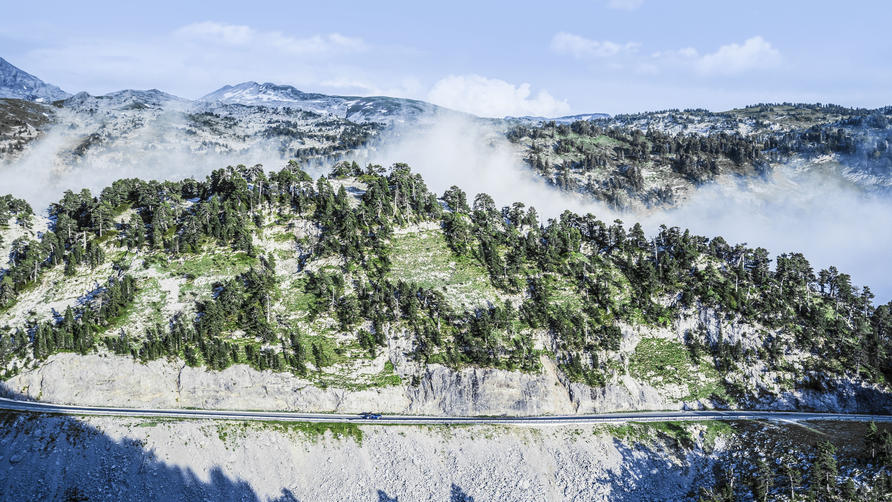
And then we’re into the Pyrenees. So far, the Senna has been a borderline brutal companion. But this is where it counts, where we learn if McLaren has created a car that actually serves a purpose besides fluffing the racing egos of the wealthy. I’ve never been much of a one for round-and-round racing (don’t have the discipline), so maybe that’s why I find the NA-214 and NA-137 so much more enthralling than a circuit.
This is total involvement: scenery, road, environment, traffic, never a moment you can switch off. Or want to. Because very soon I realise that what I’m driving is a spectacular road car. It’s begun already, of course. The driving position, the organisation and orientation of the controls, the feel of the naked Alcantara steering wheel in your hands. The cabin, stripped to little more than the bare essentials, hits exactly the right note: serious, solid, dramatic, focused, yet it also has aircon, USB slots and decent centre console storage. There is no boot. The seats are the wider Touring items. I’ve stuffed a fleece down either side to pad it out and stop me sloshing fleshily about.
And now a sense of the car getting into its stride, its reach extending with every metre of altitude gained. Your rubbery nerve-endings and toneless muscles are the only bit of slack in the whole system. That a car named the Senna is better at driving than you are we can take for granted, but that it’s so able to deliver massive thrills when being driven at a fraction of its potential is perhaps McLaren’s greatest achievement (OK, that and the road legality).
The suspension is genius. Conventional springs are there only to assist, their work largely replaced by hydraulically interlinked dampers that actively resist roll, pitch and dive by pumping fluid around instantaneously, and which are able to react in just two milliseconds. It’s ludicrously complex, of course, but it works, helping separate lateral forces from vertical impacts. On the smooth Spanish side of the mountains it doesn’t have so much to do, but the moment you cross onto gnarled French tarmac, you realise how uncanny it is.
I’m not fully sold on the engine. It’s certainly not short of thrust – the delivery is uncomfortably, thrillingly rampant at the top end – but there’s still lag low down that never completely disappears. It’s a massively effective industrial component, rather than something living and beguiling. The turbo hiss is the best sound it makes.
The steering – calm, reassuring, confidence-inspiring, tactile, brimming with feedback – is sensational, not only because you know exactly how much grip you have and what the front end is doing, but because it reliably delivers that information, no matter how fast or slow you’re going. You always know precisely where you are on the sliding scale of grip. And since the front tyres are only 245-section, it is possible to discover that the Senna will eventually nudge into understeer.
On track, it’s the brakes that dominate; out here, it’s the steering – everything flows from that. Trust in the steering brings confidence to exploit the power, to play with the balance through corners, to engage with a ridiculously sharp-reacting yet approachable chassis. And backing it all up is the knowledge that you can always, always brake harder, stop faster than you currently are. This is especially useful when you steam around a corner and find a cow in your way. Or a sheep. Or a foal. Or a goat. Or the mess they leave behind, which soon cakes the Senna’s flanks and starts to smell… Yep, the Col de la Pierre Saint-Martin is far more heavily trafficked by pastoral wildlife than humans.
It’s bloody awesome, actually. The Spanish side is rich in variety from the moment you leave the autopista: fast sweepers, long straights, hairpins, a section where the Carretera del Roncal loops back over itself among trees that cling to the skin of rocks. The French side – tight, dark and weaving – is more oppressive and challenging. It’s the Senna’s manners on that side that impress me more as we descend the mountains at night. Its movements are so efficient and contained, but it’s less severe, less punishing, less wince-inducing than I expected. I find myself driving with all knobs turned to Track.
This is the kind of journey I’d like to hope that Ayrton would have done, just taken himself off to do something for the hell of it
I’m tempted to give lowered Race mode a go – which creature will report me for driving in a mode that’s not road legal? – but the reduced ride height makes me nervous for the carbon splitter, and it’s not like I need even more rigid control. Ground clearance, I discover, when clattering over an unseen cobbled speedbump in the first village we arrive into, is carbon-savingly better than you might imagine. The downside is that in daily driving it doesn’t have the stance it deserves.
Day one finishes with 775 miles done and an 11pm McDonald’s run to check the drive-through ability of the window slots. Tip: don’t go for a Big Mac Maxi.
Another mountain session the next morning only serves to confirm how stellar the Senna is. I get so carried away we have to dispatch the support car for an emergency jerry can, before descending to Pau, topping up the tanks and heading out onto Friday afternoon autoroutes. This is the kind of journey I’d like to hope that Ayrton would have done, just taken himself off to do something for the hell of it. It was something Bruno said that had confirmed his more playful side: “Whenever he came home, we used to mess around on the farm. We’d go racing for hours, all day – it was such a good time. We drove the go-kart until the tyres failed. You could see the canvas, but you’d continue.”
The 500 miles to Monaco pass pleasantly enough. A rich orange sunset illuminates the A8, and I get some tunes going through the two-speaker lightweight Bowers & Wilkins system. It’s not going to win any prizes, but listening to music, even if it’s tinny, is a tonic. People wave, the light fades, traffic thins, calmness descends.
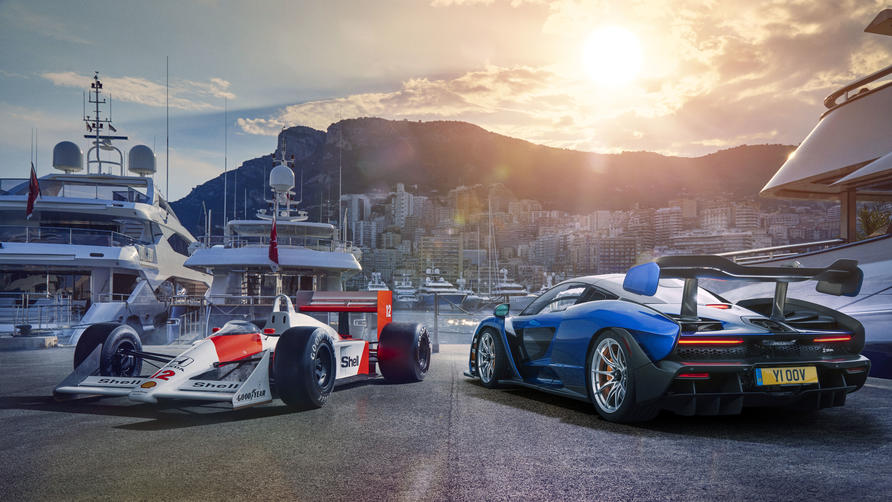
And then we arrive in Monaco. And are instantly the biggest story in town. The Senna brings Casino Square to a standstill. A throbbing mob descends, phones wave, Instagram explodes. One bloke, fully grown, trembling from head to toe, grabs my arm and says: “I literally can’t believe what I’m seeing – this is the greatest thing ever! Thank you, thank you.” It’s clearly not, is it, mate – it’s just another hypercar. But then I realise it’s not.
Not one person mentioned Ayrton. But they all know that only one person can ever be the first to bring a new hypercar into Monaco. Tonight it was me, in a McLaren Senna. And to them, that matters. When we drop ‘our’ Senna off at McLaren’s Monaco showroom, I’m doorstepped by a loafer wearer, “I’ve got one coming,” he says, apropos of not much while shaking his heavy watch, “F***ing ugly.” “What are you going to do with it, then?” I ask him. “Sell it,” he says with a shrug.
This place is wrong. I’m ashamed that these people who claim to love supercars know so little about them, that their appreciation is so shallow. And especially here, where the links to Ayrton are so strong. Six times he won here. Six.
But there’s another side to Monaco. I push through the madness of Casino Square, down to Mirabeau, around Loews hairpin, the right at Portier and into the tunnel. They come through here at 170mph even though it’s narrow and that kink is quite pronounced. I find a quiet spot in the harbour to get out, look back and take stock. Ayrton mastered this place by driving with ruthless precision. “My uncle was a man of extremes,” Bruno said. “As a racer he was extremely hard, really aggressive, but his human side was very soft, super-friendly.” Senna the car doesn’t have quite the same scope, but that’s not the point. It works on road as thrillingly as it works on track, is as focused and determined as the man whose name it bears. A fitting tribute to the legend that is Ayrton Senna.
Trending this week
- Car Review
BMW iX3






